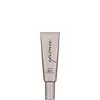What's inside
What's inside
 Key Ingredients
Key Ingredients

 Benefits
Benefits

 Concerns
Concerns

 Ingredients Side-by-side
Ingredients Side-by-side

Water
Skin ConditioningButylene Glycol
HumectantPPG-2 Myristyl Ether Propionate
EmollientSalix Alba Bark Extract
AstringentSalicylic Acid
MaskingC13-14 Isoparaffin
EmollientLaureth-7
EmulsifyingPolyacrylamide
Cetearyl Alcohol
EmollientTrisiloxane
Skin ConditioningLimnanthes Alba Seed Oil
Skin ConditioningAzelaic Acid
BufferingC10-30 Cholesterol/Lanosterol Esters
EmulsifyingCitrus Aurantium Dulcis Peel Oil
MaskingCitrus Limon Peel Oil
MaskingCymbopogon Citratus Leaf/Stem Oil
MaskingEthylene Brassylate
MaskingGlycerin
HumectantGlyceryl Stearate
EmollientLavandula Hybrida Oil
EmollientLinalool
PerfumingLinalyl Acetate
MaskingLinum Usitatissimum Seed Oil
PerfumingLitsea Cubeba Fruit Oil
MaskingOctanal
PerfumingOlea Europaea Fruit Oil
MaskingPEG-100 Stearate
Persea Gratissima Oil
Skin ConditioningPetrolatum
EmollientPhenoxyethanol
PreservativePhytosterols
Skin ConditioningPolysorbate 60
EmulsifyingSodium Hyaluronate
HumectantSodium Hydroxide
BufferingZinc Pyrithione
AntiseborrhoeicWater, Butylene Glycol, PPG-2 Myristyl Ether Propionate, Salix Alba Bark Extract, Salicylic Acid, C13-14 Isoparaffin, Laureth-7, Polyacrylamide, Cetearyl Alcohol, Trisiloxane, Limnanthes Alba Seed Oil, Azelaic Acid, C10-30 Cholesterol/Lanosterol Esters, Citrus Aurantium Dulcis Peel Oil, Citrus Limon Peel Oil, Cymbopogon Citratus Leaf/Stem Oil, Ethylene Brassylate, Glycerin, Glyceryl Stearate, Lavandula Hybrida Oil, Linalool, Linalyl Acetate, Linum Usitatissimum Seed Oil, Litsea Cubeba Fruit Oil, Octanal, Olea Europaea Fruit Oil, PEG-100 Stearate, Persea Gratissima Oil, Petrolatum, Phenoxyethanol, Phytosterols, Polysorbate 60, Sodium Hyaluronate, Sodium Hydroxide, Zinc Pyrithione
Water
Skin ConditioningGlycerin
HumectantUrea
BufferingLinum Usitatissimum Seed Oil
PerfumingCetearyl Alcohol
EmollientOlea Europaea Fruit Oil
MaskingZeolite
AbsorbentCetearyl Glucoside
EmulsifyingBorago Officinalis Leaf Extract
Skin ConditioningRicinus Communis Seed Oil
MaskingSimmondsia Chinensis Seed Oil
EmollientPhenoxyethanol
PreservativeSodium Cetearyl Sulfate
CleansingEthylhexylglycerin
Skin ConditioningCaprylyl Glycol
EmollientCymbopogon Martini Oil
MaskingLavandula Angustifolia Oil
MaskingPelargonium Graveolens Oil
MaskingRosa Damascena Flower Water
MaskingCitronellol
PerfumingGeraniol
PerfumingPhenethyl Alcohol
MaskingLinalool
PerfumingWater, Glycerin, Urea, Linum Usitatissimum Seed Oil, Cetearyl Alcohol, Olea Europaea Fruit Oil, Zeolite, Cetearyl Glucoside, Borago Officinalis Leaf Extract, Ricinus Communis Seed Oil, Simmondsia Chinensis Seed Oil, Phenoxyethanol, Sodium Cetearyl Sulfate, Ethylhexylglycerin, Caprylyl Glycol, Cymbopogon Martini Oil, Lavandula Angustifolia Oil, Pelargonium Graveolens Oil, Rosa Damascena Flower Water, Citronellol, Geraniol, Phenethyl Alcohol, Linalool
Ingredients Explained
These ingredients are found in both products.
Ingredients higher up in an ingredient list are typically present in a larger amount.
Cetearyl alcohol is a mixture of two fatty alcohols: cetyl alcohol and stearyl alcohol. It is mainly used as an emulsifier. Emulsifiers help prevent the separation of oils and products. Due to its composition, it can also be used to thicken a product or help create foam.
Cetearyl alcohol is an emollient. Emollients help soothe and hydrate the skin by trapping moisture.
Studies show Cetearyl alcohol is non-toxic and non-irritating. The FDA allows products labeled "alcohol-free" to have fatty alcohols.
This ingredient is usually derived from plant oils such as palm, vegetable, or coconut oils. There is debate on whether this ingredient will cause acne.
Due to the fatty acid base, this ingredient may not be Malassezia folliculitis safe.
Learn more about Cetearyl AlcoholGlycerin is already naturally found in your skin. It helps moisturize and protect your skin.
A study from 2016 found glycerin to be more effective as a humectant than AHAs and hyaluronic acid.
As a humectant, it helps the skin stay hydrated by pulling moisture to your skin. The low molecular weight of glycerin allows it to pull moisture into the deeper layers of your skin.
Hydrated skin improves your skin barrier; Your skin barrier helps protect against irritants and bacteria.
Glycerin has also been found to have antimicrobial and antiviral properties. Due to these properties, glycerin is often used in wound and burn treatments.
In cosmetics, glycerin is usually derived from plants such as soybean or palm. However, it can also be sourced from animals, such as tallow or animal fat.
This ingredient is organic, colorless, odorless, and non-toxic.
Glycerin is the name for this ingredient in American English. British English uses Glycerol/Glycerine.
Learn more about GlycerinLinalool is a fragrance and helps add scent to products. It's derived from common plants such as cinnamon, mint, citrus, and lavender.
Like Limonene, this ingredient oxidizes when exposed to air. Oxidized linalool can cause allergies and skin sensitivity.
This ingredient has a scent that is floral, spicy tropical, and citrus-like.
Learn more about LinaloolLinum Usitatissimum Seed Oil is the expressed oil from the dried ripe seed of the Linseed, Linum usitatissimum L., Linaceae
Olea Europaea Fruit Oil is the fixed oil obtained from the ripe fruit of the Olive. In other words - olive oil.
The primary contents of olive oil are glycerides of the fatty acids linoleic, oleic and palmitic.
Olive oil also contains antioxidants such as Vitamin E. Antioxidants may help reduce signs of aging by fighting unstable free-radical molecules. It also contains Vitamins A (retinol), D, and K.
The squalene in olive oil makes it a great emollient. Emollients help soothe and soften your skin by trapping moisture in. This makes olive oil a great skin moisturizer.
Studies show olive oil to have antibacterial and antifungal properties in low concentrations. Another study found olive oil irritated sensitive oily skin. We always recommend speaking with a professional about using this ingredient in your routine.
Due to the fatty acid content, this ingredient may not be fungal-acne safe.
Learn more about Olea Europaea Fruit OilPhenoxyethanol is a preservative that has germicide, antimicrobial, and aromatic properties. Studies show that phenoxyethanol can prevent microbial growth. By itself, it has a scent that is similar to that of a rose.
It's often used in formulations along with Caprylyl Glycol to preserve the shelf life of products.
Water. It's the most common cosmetic ingredient of all. You'll usually see it at the top of ingredient lists, meaning that it makes up the largest part of the product.
So why is it so popular? Water most often acts as a solvent - this means that it helps dissolve other ingredients into the formulation.
You'll also recognize water as that liquid we all need to stay alive. If you see this, drink a glass of water. Stay hydrated!
Learn more about Water